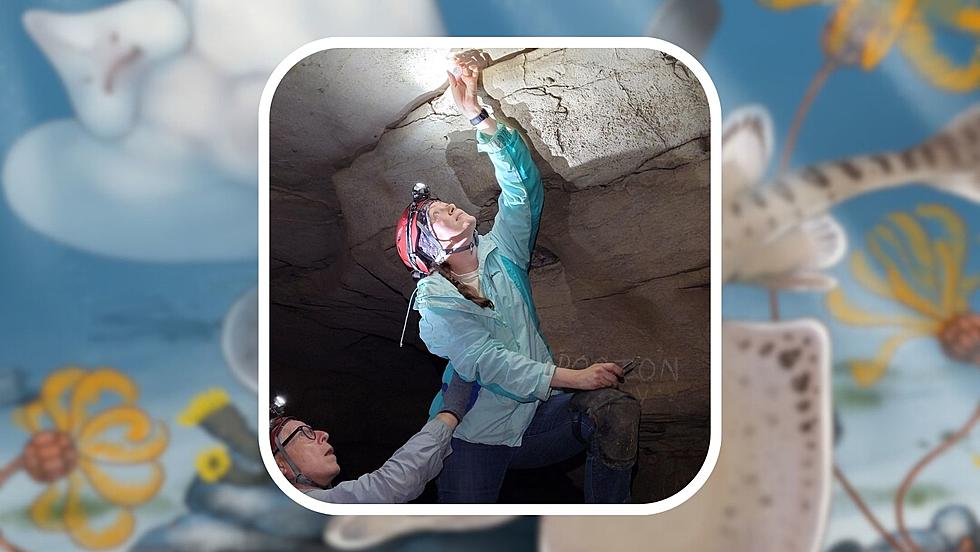
New Species of Ancient Extinct Shark Discovered in Kentucky’s Mammoth Cave
Last Week to celebrate National Fossil Day, Mammoth Cave National Park announced that their researchers have discovered and identified fossils of a new (to us) ancient shark that has been extinct for millions of years.
It is absolutely fascinating to me that researchers in the cave system have found so many different species over the past several years of examining layers in the darkness of the trails inaccessible to the general public. Since 2019, shark fossil specialist John-Paul (JP) Hodnett of the Maryland-National Capital Parks and Planning Commission has been working with a team to perform a paleontological resources inventory of the world's largest cave system. According to the National Park Service, "At least 70 species of ancient fish have been identified at Mammoth Cave from the over 25 caves and cave passages that have been surveyed."
The cave's environment has been a perfect place to preserve the fossils of ancient beings that once ruled the world before their extinction. "The constant even temperatures, slow erosion rates, and protection from external erosional forces (precipitation, wind, and sunlight) are ideal conditions for the variety of teeth, spines, and even skeletal cartilage of sharks and their kin."
Researchers have to navigate remote sections of the tunnels and formations by squeezing through tunnels on their bellies, rappeling down holes, and even using kayaks on underground rivers that were once home to these sharks and marine life. "The older, Middle Mississippian St. Louis and Ste. Genevieve Formations presently have the greatest diversity of sharks, which may in part be due to these rocks representing deeper marine waters just prior to the formation of Pangea."
This new species was identified by a petal-shaped tooth excavated from the cave ceiling in the Ste. Genevieve Formation. The scientific name is Strigilodus tollesonae or “Tolleson’s Scraper Tooth" after Mammoth Cave National Park Guide Kelli Tolleson who has led many expeditions to remote fossil sites during the ongoing paleontological resources inventory.
The National Park Service describes this monumental fossil discovery. "Strigilodus tollesonae was a type of extinct shark that is more closely related to modern ratfish than to other modern sharks and rays. The teeth uncovered at Mammoth Cave represent all known tooth positions in the mouth of both adults and juveniles of the new species. The teeth were arranged in a fan-like structure with a large tooth in the middle and three other teeth, decreasing size, next to it. Each tooth had a single rounded curved cusp for clipping and grasping hard shell prey, while the inner/tongue side of the tooth was long with ridges for crushing. Strigilodus tollesonae may have lived like a modern skate, feeding on snails, bivalves, soft-bodied worms, and smaller fish."
A lot of times when we think about paleontology, we think about Jurassic Park scientists in the desert sifting through sand and dirt, but so much ancient life was thriving under the water in oceans and caves. It's exciting and even a little scary to think what lies beneath that has yet to be discovered.
Source: National Park Service News Release and Fossils of the 2023 National Fossil Day
LOOK: Stunning animal photos from around the world
Gallery Credit: Nicole Caldwell
More From WBKR-FM








![Florida Shark Frenzy Reminds Me of a Summer Trip in ’75 [VIDEO]](http://townsquare.media/site/76/files/2021/03/Florida-shark-frenzy.jpg?w=980&q=75)
